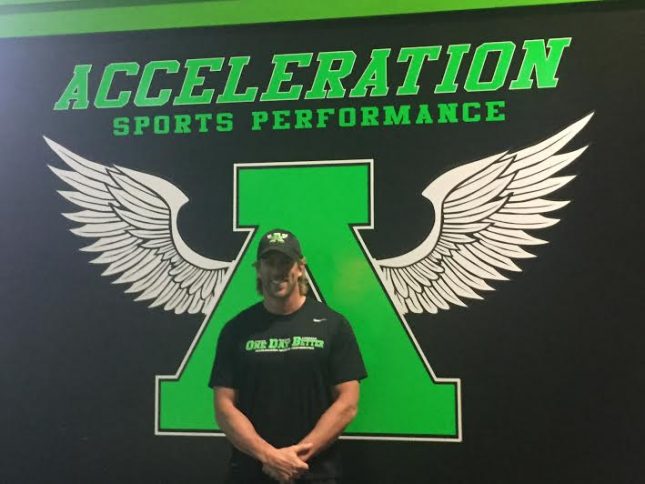Since 2008, former NFL fullback J.R. Niklos has co-owned Acceleration Sports, a local business in Naperville. The facility is dedicated to helping local athletes achieve their full potential and setting higher standards. For the past nine years, Niklos has helped just over 500 high school athletes reach Division I at the college level. I strongly recommend the business for high school athletes looking to improve their performance, or for anyone who’s looking to build his or her’s overall fitness.
How long have you owned this business and how did it start?
I’ve been here since 2008. I played six years in the NFL, and when I retired, I knew I wanted to do something like this. I was living in St. Louis at the time, and I’ve trained here since 2002. When I came to look for a place to train, this was a natural fit for me because my trainer was separating from his sports performance company at the time, so we decided to come together and go to Acceleration.
What’s your favorite part of working at Acceleration and catering towards a wide variety of different athletes?
I would say living through the athletes and living through their results. Nothing is better than seeing athletes come through our doors, and them completely changing eight weeks later. Not only having speed, power, and agility, but having confidence and belief in themselves. That helps not only with sports, but also carries over to themselves as people.
Do you have a mission statement or an overall view of your business?
We want everything to be science-backed and for improvement. It’s results based, and we’re highly mechanical with what we do, so we’re teachers first and trainers second. It’s easy to get a good workout, get good fitness training, but what we want to do is for you to spend time with us and maximize your results.
Overall, how do you help athletes improve their overall morale?
When they first come through the doors, they do a mechanical analysis assessment. We look at how they jump and move. We also look at some baseline numbers: their vertical jump, acceleration, reaction, and then we set some goals from there. Everyone’s different and this isn’t a cookie-cutter program. In some team atmospheres, it’s hard not to make it cookie-cutter because you’re accommodating 60-70 athletes. We’re able to accommodate the individual and do what they need to do to get better.
Why do you like your job and why did you retire to do this?
After four years in the NFL, you can get your retirement. By 2008, I was financially able to co-own the business. I probably could’ve played a couple more years, but I was ready for this and towards the end of my career, I enjoyed training more than I did playing. During the off-season, I would train athletes and sometimes I couldn’t wait until the season was over so I could go back to the training center. I love living through these athletes and hearing their stories, like “Hey, I’m not a backup anymore, I just became a starter!” We’ve had enough athletes now that have started at ninth grade and have made it to the NFL, Major League Soccer, etc., so for us, it’s like, “Man, I remember when he first came through the doors, I can’t believe he’s in the NFL now.”
Do you know of any notable athletes who’ve came to train here before?
Cameron Brate, who led the NFL in touchdowns [by a Tight End] this past year. He attended Naperville Central and wasn’t a major recruit. He ended up going to Harvard, trained throughout his whole career, and did his combine training. He got signed to a rookie contract by Minnesota, got cut by them, and then Tampa Bay signed him. He joins their practice squad, and next thing you know, he’s leading all tight ends in the NFL in touchdowns. We’ll get a lot of those guys, and we pride ourselves more in the hard worker than the lead athlete. Sometimes, they’re not the same athlete and we want the athlete who’ll do whatever it takes to get better, no matter how good or bad you are. We don’t necessarily want the Pro-Bowlers or the MVPs. We train them but they’re not the bulk of our athletes.




